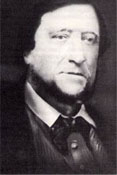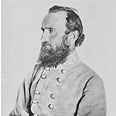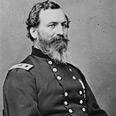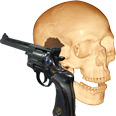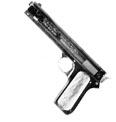Home | Glossary | Resources | Help | Contact Us | Course Map
Archival Notice
This is an archive page that is no longer being updated. It may contain outdated information and links may no longer function as originally intended.
1835
The earliest known toolmark comparison case involving firearms occurred in 1835 in London, England. A homeowner was shot and killed, and the servant was suspected of the crime. Henry Goddard, one of the Bow Street Runners (an early London police force), investigated the case.
By thorough examination of the physical evidence, Goddard was able to identify a visible flaw in the fired projectile and trace the mark to the manufacturers mold. He also identified the paper patch used to provide a seal between the projectile and the gunpowder as having been torn from a newspaper that was found in the servants quarters.
1852
A firearms-related examination occurred when an Oregon sheriff examined a hole in a homicide victims shirt to determine if it was caused by a bullet. The sheriff, using the suspect firearm and victims shirt, conducted experiments by test firing the weapon into the shirt. Subsequently, the sheriff testified in court that the hole in the shirt was caused by a bullet (not a tear); the suspect was convicted and hanged for murder.
1857
Monsieur Noilles of Paris published the first work describing wounds resulting from small caliber firearms.
1863
During the United States Civil War, Confederate General Stonewall Jackson sustained three gunshot wounds at the Battle of Chancellorsville on May 2, 1863. A bullet removed from his right hand was examined and identified as a .67 caliber ball projectile from a smooth bore musket. Because the Union Army used the .58 caliber Minnie ball projectile in their rifles, it was concluded that Jackson had been shot by Confederate soldiers. Jackson died of complications eight days later.
1864
Union General John Sedgwick was killed in battle by a single projectile fired by a Confederate sniper from an estimated distance of eight hundred yards. When the fatal bullet was removed from his body, a determination of bullet type was made based on the caliber and hexagonal shape of the bullet. This particular caliber and shape of bullet was consistent with the Whitworth rifles imported from England by the Confederate forces.
1876
A Georgia State Court allowed a witness, experienced in the use of firearms, to provide expert testimony concerning the amount of time elapsed since a gun was last fired.
1896
One of the first recorded instances of testimony regarding the effects of test firing occurred in a Kansas State Court. The court permitted the witness, experienced in the use of firearms, to conduct various experiments using the evidence pistol and similar cartridges in an attempt to determine the effect of firing at human hair and paper targets at close distances.
1900-1907
1900
A significant article titled The Missile and the Weapon was published in the June issue of The Buffalo Medical Journal . The article, written by Dr. Albert Llewellyn Hall, dealt with a variety of issues including the procedures for measuring land and groove markings on bullets. He also discussed the examination of gunpowder residues in barrels of firearms and the changes within the barrels that take place over time after firing.
1902
A Massachusetts State Court allowed expert testimony on the effects of rifling and other markings on fired bullets. This was one of the first cases to allow the introduction of photographs of evidence and test-fired bullets.
1903
In London, England, E. J. Churchill provided testimony involving the distance at which a shot had been fired into a human skull. The body of homicide victim, Camille Holland, was recovered and examined to determine the cause of death. It was determined that she had been shot at a close range with a .32 caliber revolver. Using a similar revolver and the same type of ammunition, test shots were fired into sheep skulls at varying distances. The skull of the victim was examined and compared to the sheep skulls. Churchill concluded and testified that the fatal shot was fired from a revolver at a distance of six to twelve inches. The accused was convicted and hanged.
1907
During a riot in Brownsville, Texas, a group of United States Army soldiers opened fire. Thirty-nine cartridge cases as well as fired bullets and suspect rifles were examined by Army personnel of Frankford Arsenal. This marks the first recorded instances of the evaluation of fired cartridge cases as evidence and linkage of the evidence to specific rifles.
Photographs of each cartridge case primer area were taken through a microscope and enlarged for side-by-side comparisons. Of the thirty-nine cartridge cases, thirty-three were sorted into four groups based on the primer marks. Each group was positively identified with a particular seized service rifle based on the impressions in the primers. Additionally, the class characteristics of recovered bullets were compared to determine if the bullets were consistent with either of the two rifle models in service at the time.
The Study of the Fired Bullets and Shells in Brownsville, Texas, Riot report was published in 1907 by the U.S. Government Printing Office, Washington, D.C., as part of the Annual Report of the Chief of Ordnance, U.S. Army .
1908-1916
1908
The Wisconsin State Court allowed expert testimony and experimentation regarding distance determination using observations of the presence and/or absence of gunpowder at various distances.
1912
French Professor V. Balthazard uses a series of photographic comparisons to link fired bullets to the firearm from which they were fired. Rifled areas of each land and groove were photographed and enlarged, allowing the comparison of individual markings. Balthazard applied these photographic comparison techniques to the cartridge cases using firing pin, breech face, ejector, and extractor marks.
1915
Illiterate tenant farmer Charles Stielow was convicted of killing his employer and the employers housekeeper. Stielows conviction was based in part on the testimony of an alleged firearm examiner who stated that a revolver found in Stielows house had fired the fatal bullets.
Charles E. Waite, a special investigator for the New York Attorney Generals Office, was appointed by the governor of New York to reinvestigate the Stielow case. Waite and Dr. Max Poser, a microscopy expert with Bausch & Lomb, microscopically examined and compared the fatal bullets with bullets test fired from Stielows revolver. They determined that Stielows revolver could not have been used to fire the fatal bullets. This conclusion, together with other aspects of the investigation, led the governor to pardon Stielow and release him from prison.
1916
Charles E. Waite began gathering data on U.S. and foreign small arms including manufacturer, caliber, and rifling (number, twist, and size of rifling). He continued collecting and tabulating data through 1925.
1917-1920
1917
Dr. Sydney Smith, principal medico-legal expert in Cairo, Egypt, applied scientific methods to medico-legal problems, including the examination of firearms and related evidence. Smith examined and collected fired bullet and cartridge case evidence from crime scenes in the hope that it might be useful for future prosecutions.
1920
Nicola Sacco and Bartolomeo Vanzetti were tried for the murder of two factory workers carrying payroll. The case received worldwide publicity due to the political activities of the accused. At the trial, four experts presented firearms related evidence two for the prosecution and two for the defense. The prosecution examiners provided testimony linking the firearms evidence to the suspects firearms while the defense examiners stated that the bullets and cartridge casings were not fired by the suspects firearms. Based on the testimony of the firearm examiners and others, the two suspects were convicted of murder. This case called into question the reliability of firearms evidence examination because many believed it was used in this case as a tool to frame the suspects for their political views. The case went through numerous appeals and reviews during 1920 1927. Sacco and Venzetti were executed in August of 1927.
Additional Online Courses
- What Every First Responding Officer Should Know About DNA Evidence
- Collecting DNA Evidence at Property Crime Scenes
- DNA – A Prosecutor’s Practice Notebook
- Crime Scene and DNA Basics
- Laboratory Safety Programs
- DNA Amplification
- Population Genetics and Statistics
- Non-STR DNA Markers: SNPs, Y-STRs, LCN and mtDNA
- Firearms Examiner Training
- Forensic DNA Education for Law Enforcement Decisionmakers
- What Every Investigator and Evidence Technician Should Know About DNA Evidence
- Principles of Forensic DNA for Officers of the Court
- Law 101: Legal Guide for the Forensic Expert
- Laboratory Orientation and Testing of Body Fluids and Tissues
- DNA Extraction and Quantitation
- STR Data Analysis and Interpretation
- Communication Skills, Report Writing, and Courtroom Testimony
- Español for Law Enforcement
- Amplified DNA Product Separation for Forensic Analysts


